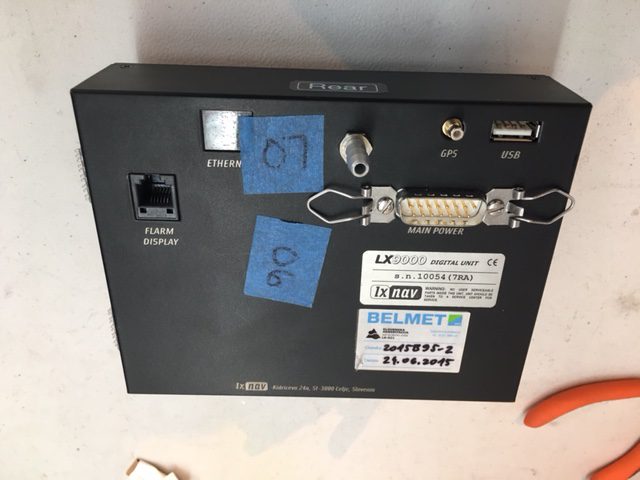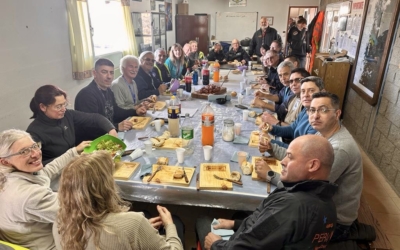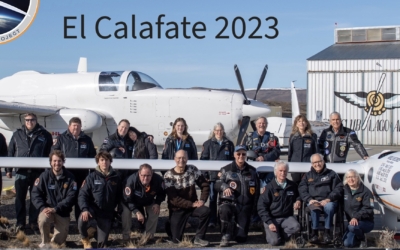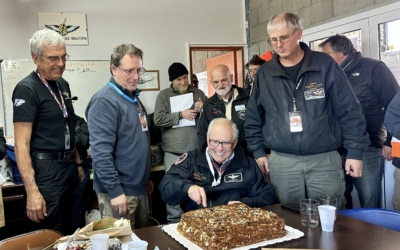A world record is more than accomplishing the desired feat. A world record claim must document the data and prove that the pertinent rules were followed. A major component of verification is the flight data recorders. Thanks to Professsor Simone D’Amico and the Space Rendezvous Lab at Stanford University, Perlan Project was able to document that flight data and follow the never before used rules. Thanks also to Bernald Smith and Todd Walters for setting up the initial calaibration in 2016 and to Duncan Eddy and Vince Giralo for running the scripts. Tom Payne (PhD Stanford) helped the lab set up the two LX’s for the calibrations.
Airbus Perlan Mission II used the first two High Altitude Flight Recorders (HAFR) for gliders that we know of. Through a generous grant from the Soaring Society of America we purchased two LX 9000s that were specially made to be HAFRs. The initial calibration occurred in July 2016 before our first trip to Argentina. It was good that we went through that process as it was discovered that the GPS engines had been locked into low altitude portable mode. So a quick trip in 2016 back to the manufacturer fixed that issue. Another round of calibration was performed to verify the HAFRs would record to 30,000 meters. The Standford instrumentation uses a known set of satellite array and data for a particular date. The LX 9000 data is compared to this known data.
The rules for high altitude soaring records have changed since Perlan 1 claimed the record eleven years ago based on a pressure altitude of 50,722 feet. No longer can pressure altitude be used above 15,000 meters, only GPS altitude now. No longer is the 3% margin used since GPS altitude is so much more accurate. Now you must exceed the old record in meters by 150 meters. The LX9000 displays both pressure and GPS altitudes. Jim kept track of the differential between GPS and pressure that was caused by non-standard conditions. Things like being super cold affect this. We knew from the morning’s balloon sounding that there was an 1800 foot difference around 50,000 feet, not in our favor. That’s why Jim and Morgan kept climbing up to 54,000 feet pressure altitude (6.5% higher-but no longer useful). The GPS altitude claimed was 15,902 meters or 52,172 feet. (There’s the 1800 foot non-standard day adjustment) The 15,902 GPS meters was 440 meters above the previous claim or about 3 times what was needed to set a record under the new rules.
Once the high flight had landed on September 3, 2017 both the data files were immediately sent to people in the verification chain. (The application awaits the re-calibration charts.) Although two more attempts were made in Perlan 2 for higher altitude, the weather did not support. Two weeks after the high flight the Perlan 2 was ready to be shipped to Minden by boat; at that time we removed the LX9000s from the panels. They were wrapped in yellow towels for protection and carried to California. There is a two month re-calibration requirement and the boat will not be back within that two months. They must be removed from the panel anyway to take to the calibration facility.
We coordinated with Stanford’s Space Rendezvous Lab to arrange a re-calibration. Professor Simone D’Amico was available on October 5, 2017. He met us at the lab and Vince Giralo unwrapped the yellow towels. Vince ran the dual calibration script exactly as done in 2016. The script is GPS only, no pressure data is used. All seemed as expected and the test ran above 90,000 feet to the 30,000 meter repeat from 2016.
Jim looked very relaxed surrounded by aeronautical mathematics. Although he was accepted to Stanford for a masters program, he turned it down to become an Air Force test pilot. Some years later he used his engineering degree to teach flight test to select seniors at the Air Force Academy for 4 years. Not liking what was available, he wrote his own Practical Flight Test text book. It is still requested by other instructors.
Afterwards we used the actual flight logs to run on the Stanford equipment. Sharp eyes may see in the photo that we switched from feet to meters on the LX displays to run the actual flight logs. A wry sense of humor would note that reality needed to be calibrated by scientific equipment, but scientific equipment had a reality check using real flight logs. Jim pulled up See You on his laptop to give Simone and Vince a look at the analysis and charts available in that software. Once we get the second calibration table and chart from the Space Rendezvous Lab, the application for a world soaring altitude record can finally be submitted.
It is amazing to me that the two HAFRs at altitudes near 16,000 (near record claim) meters are only 2 meters apart, and at 98,000 feet (top of calibration test) are only 1 foot apart. How fantastic is that technology? Using the 2016 calibration chart we anticipate a 16 meter adjustment increase in the 15,902 meter altitude claim. But until the 2017 calibration charts are available, and the application undergoes scrunity and final approval, we don’t know what the final altitude will be.
Perlan Soars High! Jackie






